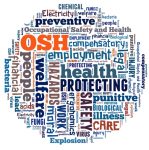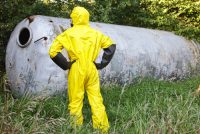Category: Uncategorized
Example Category with Description
No more failed expatriate assignments. Expatriate compensation and solving the trailing spouse problem. There are two main approaches to occupational health and safety (OH&S). One is a reactive approach based on legislation and the threat of legal action including fines and business restrictions.
OSHA estimates that workplace injuries and illnesses cost the nation’s businesses $170 billion per year in wasteful and often preventable expenses.
Hydrogen sulfide, or sour gas, is a flammable, colorless gas that is toxic at extremely low concentrations. It is heavier than air, and may accumulate in low-lying areas. It smells like “rotten eggs” at low concentrations and causes workers to quickly lose their sense of smell. Hydrogen sulfide, or sour gas, is a flammable, colorless […]
Hydrogen sulfide gas is very corrosive and therefore extremely hazardous. You need to take special precautions when choosing equipment and establishing safe work procedures. Hydrogen sulfide gas is very corrosive and therefore extremely hazardous. You need to take special precautions when choosing equipment and establishing safe work procedures. All oil and gas well drilling sites […]
Taking immediate and appropriate action after a chemical spill can save lives. If hazardous chemicals are present at your facility, train employees in how to react should an emergency occur. Today’s Advisor gives you a basic outline for a chemical spill training session. Here are some key actions employees need to be trained to take […]
In all, OSHA’s ambitious regulatory agenda sets out action on 29 rulemakings. Here are the highlights. Final rule stage. Final rules expected this year or later: Occupational injury and illness recording and requirements—NAICS update and reporting revisions. OSHA anticipates a final rule in June 2014 that would update the list of industries partially exempt from […]
Yesterday, we presented the views of two leaders in workplace safety on closing the gap between safety as a value and safety culture. Today, we conclude with the thoughts of a third. Jeff Ruebesam, VP of Global Health, Safety and Environmental at Fluor Corporation, spoke about his company’s use of leading indicators to measure employee […]
In a recent report, OSHA makes a case for injury and illness prevention programs. In a February white paper, OSHA defines an injury and illness prevention program as "a proactive process to help employers find and fix workplace hazards before workers are hurt." Says OSHA: "We know these programs can be effective at reducing injuries, […]
The Pipeline and Hazardous Materials Safety Administration’s (PHMSA’s) hazmat training requirements are nonspecific. But one thing is crystal clear: You are legally responsible for making sure hazmat employees are properly trained. According to PHMSA regulations, hazmat training should ensure that employees can identify hazardous materials, understand regulatory requirements, know how to prevent accidents, and know […]
According to the Centers for Disease Control and Prevention (CDC), almost one-fifth of people who have high blood pressure don’t know they have it. And, because doctor visits for high blood pressure-related maladies top 44 million a year, our Safety Training Tips editor says that it makes good health and business sense to educate your […]






